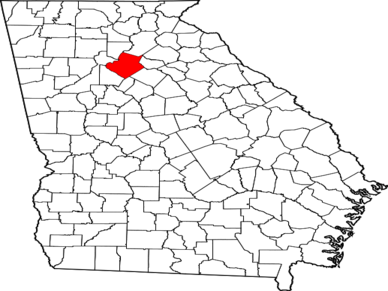Computational model exposes severe problems with the welfare system
Previously, it was shown how a single mom with two kids in Gwinnett County could lose welfare program benefits by earning more money. This explained why $9 + $1 can equal negative $6,000.
The Gwinnett county example showed only two wage levels. However, the computer model provides results for a large range of wage levels and family structure. This enables policymakers, administrators and interested citizens to see a more complete picture of the challenges facing a family in poverty.
The computer model can generate scenarios in any of the other 158 counties in the state of Georgia.
No matter the county welfare cliffs (that unintended consequence of the current welfare system whereby an individual or family loses by earning more) can be found – essentially trapping families into a level of income.
These cliffs can be clearly seen on the chart below. Wherever there is a drop in a line, there is a loss in benefits that exceed the gain in earned income.
Also clearly seen, the benefit levels are very high and the severity of the cliffs significant. More surprisingly, there is not just one cliff but a series of cliffs that cascade down.
The chart shows that when government benefits are taken into account, it is financially better for a single mom to earn an hourly wage of $9 than an hourly wage three times as much, or $27 per hour.
Of course, it is important to point out that the severity of the cliffs and the income levels where they drop off change depending on the county, the characteristics of the family, and other factors.
These findings underscore the need to undertake fundamental welfare reform beyond the various reforms already being implemented. The system needs to become more rational so not to punish families who try to get ahead by earning more money.
A forthcoming study will highlight other examples.
Chart showing welfare cliff for typical family in Gwinnett County:

How to read the chart: The chart above illustrates the scenario highlighted in this and the prior posts , that is, a single mom with two children in Gwinnett county. The horizontal axis is gross earned income, and the vertical axis is the sum of net earned income plus the various welfare assistance benefits. The first line on the bottom is net earnings. The next line above is net earnings plus refundable tax credits. Each line stacked above adds another government benefit in the following order: TANF Cash, food benefits (Food stamps, free school meals and WIC food packages), housing (Section 8 Housing Choice Vouchers), subsidized child care (the CAPS subsidized childcare program), medical assistance (Medicaid and PeachCare), and Affordable Care Act subsidies.
